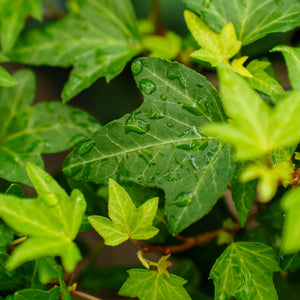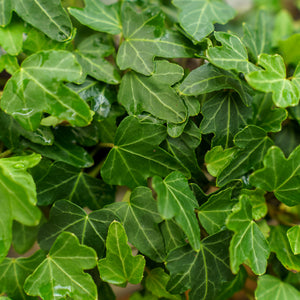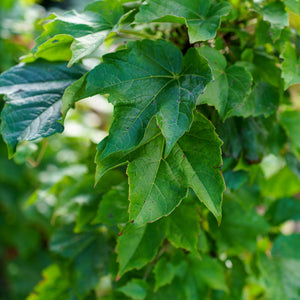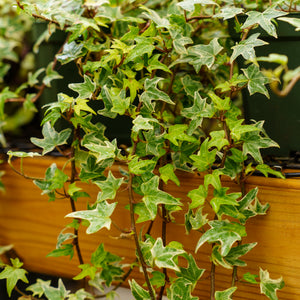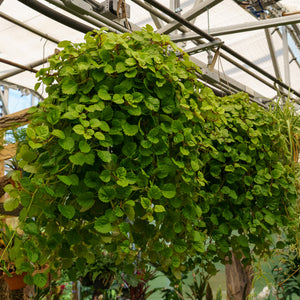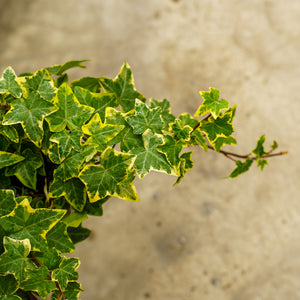The Ivy Guide
Ivy plants, with their classic trailing vines and distinctive lobed leaves, offer timeless elegance and practical utility for both indoor and outdoor gardens. Whether climbing a trellis, spilling from a hanging basket, or blanketing ground surfaces, ivies are cherished for their evergreen foliage, adaptability, and ease of care. While commonly associated with Hedera helix, the ivy family spans several genera, including Parthenocissus and Plectranthus, offering a diverse range of forms, textures, and growth habits.
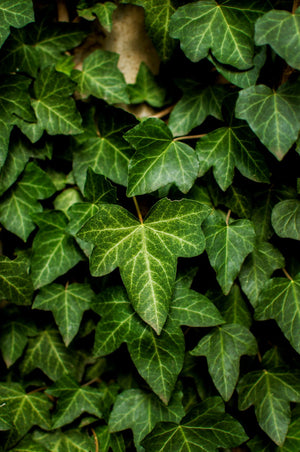
About
The most familiar ivy, Hedera helix (English ivy), is a vigorous climber native to Europe and western Asia. Its classic varieties, such as 'Baltica', 'Thorndale', and 'Variegata', feature heart-shaped or lobed leaves in shades of deep green, often with cream or silver margins. Miniature forms like 'Mini Esther' and 'Duckfoot' are ideal for small spaces or containers.
Algerian ivy (Hedera algeriensis), including cultivars like 'Montgomery', offers larger, glossier leaves and greater heat tolerance. Hedera canariensis (Canary Island ivy) and 'Neon' provide bold texture and color for interior spaces or warmer outdoor climates.
Beyond the Hedera genus, Boston ivy (Parthenocissus tricuspidata) such as 'Fenway Park' and 'Green Showers' brings seasonal interest with bold autumn color and fast coverage of walls or fences. Similarly, ornamental ivies in the Plectranthus genus, like Plectranthus australis and 'Variegatea', offer trailing charm in container gardens with their fragrant foliage and cascading growth.
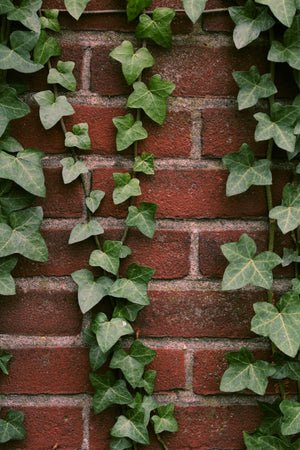
PLANTING
Ivies are extremely adaptable, thriving in both containers and the landscape under the right conditions:
- USDA Hardiness Zones: Hedera helix: Zones 4–9, Hedera canariensis, algeriensis: Zones 7–11, Parthenocissus: Zones 4–8, Plectranthus: Grown as annuals in most zones or as houseplants
- Soil: Moist, well-drained soil rich in organic matter. Tolerates a range of soil types but avoid waterlogged conditions.
- Sunlight: Partial to full shade for most ivies. Parthenocissus and Hedera helix 'Thorndale' can handle more sun, especially with adequate moisture.
- Spacing: For groundcovers, space 12–18 inches apart. Allow ample room for climbing varieties to spread.
- Planting Time: Spring or early fall is best, though container-grown plants can be transplanted any time the ground is workable.
Use mulch around new transplants to retain moisture and reduce weed competition. Support climbers with trellises, fences, or walls.
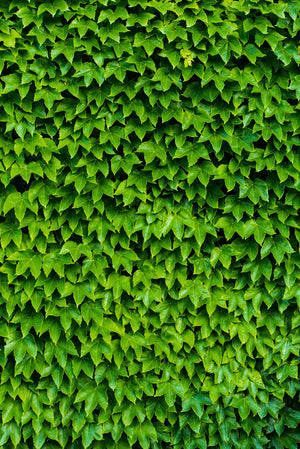
CARE
Once established, ivy plants require minimal attention. However, they benefit from occasional maintenance to manage their growth and appearance:
- Watering: Keep soil evenly moist during establishment. Once established, most ivies are drought tolerant, though container specimens require regular watering.
- Fertilizing: Feed in early spring with a balanced, slow-release fertilizer. Indoor plants may benefit from monthly feeding during the growing season.
- Pruning: Trim regularly to shape, control spread, and rejuvenate leggy growth. For climbers, pruning encourages denser foliage.
- Support & Training: Secure vines to supports or trellises as needed. Parthenocissus adheres with suction-like discs, while Hedera uses aerial roots.
- Pest Monitoring: Check for spider mites, especially on indoor plants. Regular misting or rinsing can help deter pests.
Ivy may become invasive in some regions—check local guidelines before planting extensively outdoors.
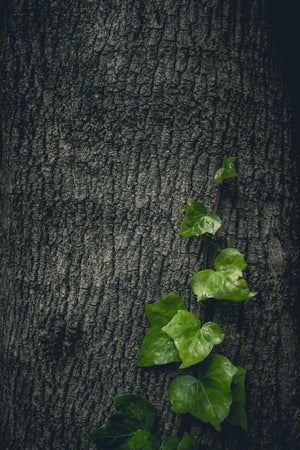
HOW TO USE
Ivy’s trailing and climbing habit makes it ideal for countless design applications in both landscapes and interiors:
- Groundcover: Plant Hedera helix or Hedera canariensis as a dense, weed-suppressing ground layer under trees or shrubs.
- Vertical Coverage: Use Boston ivy or Algerian ivy to soften fences, trellises, or brick walls.
- Containers & Hanging Baskets: Plectranthus coleoides 'Variegatea' and Senecio mikanioides 'Variegatus' trail beautifully from elevated planters.
- Houseplants: Grow variegated ivies indoors on shelves, in macramé hangers, or trained on small topiary frames.
- Mixed Plantings: Combine with ferns, caladiums, or shade perennials like heuchera for varied texture and form.
Evergreen foliage and minimal bloom clutter make ivy an excellent backdrop for seasonal flowers or bold-foliaged companion plants.
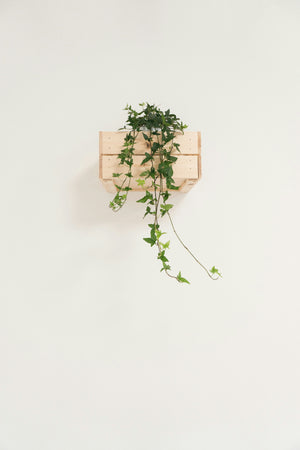
COMMON QUESTIONS
- How to propagate ivy plant? Take 4–6 inch cuttings below a leaf node. Root in water or moist potting mix. Provide humidity and indirect light.
- How to care for ivy plant? Provide consistent moisture, indirect light, and occasional pruning. Indoors, rinse leaves to deter pests.
- Is ivy toxic to cats? Yes. Ivy foliage can cause vomiting, drooling, or gastrointestinal upset if ingested.
- Is ivy toxic to dogs? Yes. All parts of ivy can be mildly to moderately toxic, especially if consumed in large amounts.
- Do deer eat ivy? Occasionally. While not a top choice, deer may browse ivy when other food sources are scarce.
- Do rabbits eat ivy? Rabbits may nibble young shoots, but ivy is generally not a preferred food source.
Conclusion
Ivy remains a classic, versatile plant for gardens and interiors, offering graceful form, adaptable growth, and year-round texture. With species and cultivars suited to nearly every light and climate condition, ivy can serve as groundcover, vertical accent, or indoor foliage focal point. When planted with care and managed responsibly, ivy contributes timeless charm and structure to any planting scheme.
The Ivy Collection
Sold Out
Sold Out
Sold Out
Sold Out

